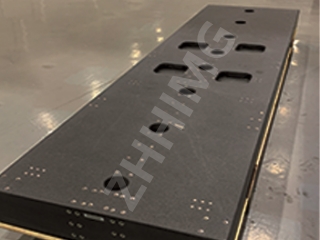Precision granite components have emerged as indispensable tools in the realm of scientific research, offering unparalleled accuracy and stability for various applications. Granite, known for its exceptional rigidity and low thermal expansion, provides a stable platform that is crucial for high-precision measurements and experiments.
One of the primary applications of precision granite components is in metrology, where they serve as the foundation for coordinate measuring machines (CMMs). These machines rely on granite surfaces to ensure that measurements are taken with the utmost accuracy. The inherent properties of granite minimize the effects of environmental factors, such as temperature fluctuations, which can lead to measurement errors. As a result, researchers can trust the data collected, leading to more reliable outcomes in their studies.
In addition to metrology, precision granite components are widely used in optical research. Optical tables made from granite provide a stable surface for experiments involving lasers and other sensitive optical equipment. The vibration-damping qualities of granite help to eliminate disturbances that could compromise the integrity of optical measurements. This stability is particularly vital in fields such as quantum mechanics and photonics, where even the slightest deviation can alter experimental results.
Furthermore, precision granite components are utilized in the assembly and calibration of scientific instruments. Their durability and resistance to wear make them ideal for supporting heavy equipment and ensuring that instruments remain aligned over time. This is particularly important in laboratories where precision is paramount, such as in the fields of aerospace, automotive, and materials science.
In conclusion, the application of precision granite components in scientific research is a testament to their critical role in enhancing measurement accuracy and experimental reliability. As research continues to advance, the demand for these components is likely to grow, solidifying their place as essential tools in the scientific community.
Post time: Nov-21-2024

